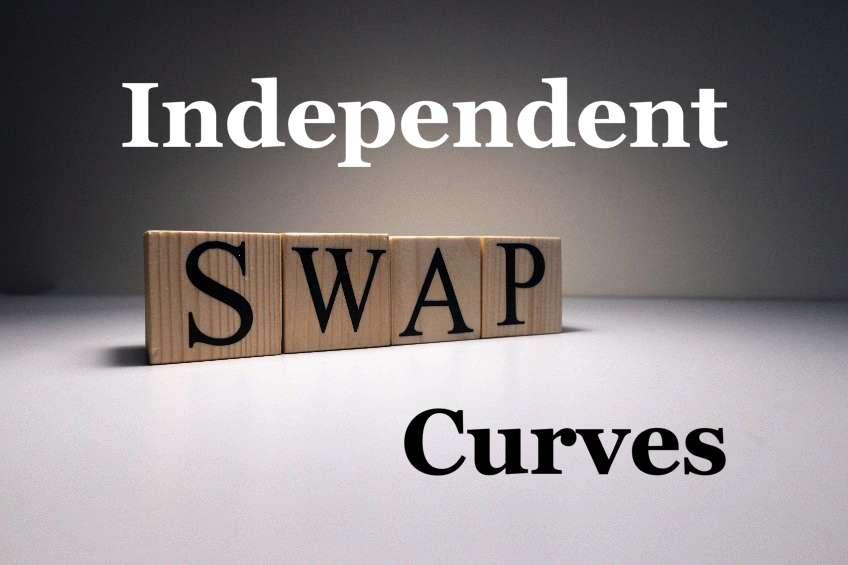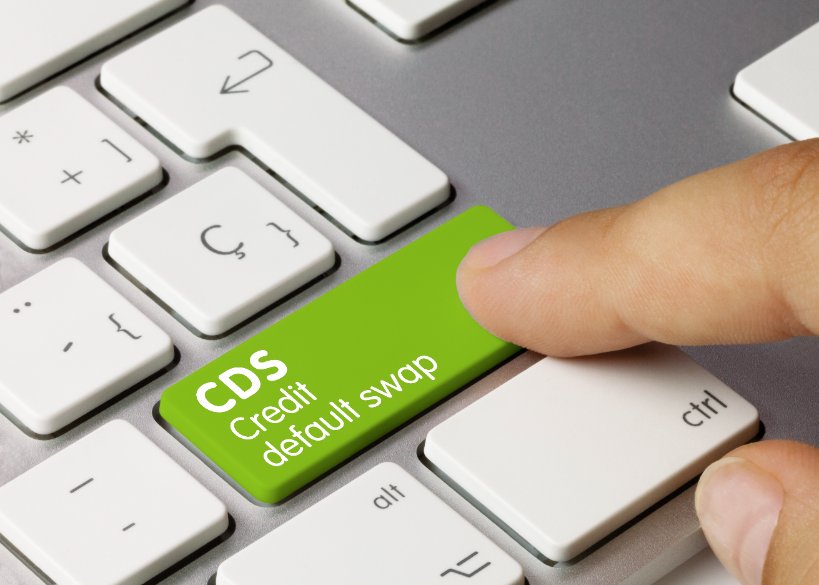DIH’s Credit Default Swaps (CDS) Spreads.
Overview: DIH provides 5- & 10-year spreads together with a wide range of currency, restructuring clause, and tier of debt combinations. Spreads are expressed as the basis point cost of buying protecting on the corresponding CDS. Full term structure curves (with spreads covering 6 months through 30 years) are also available.
Coverage: We currently cover over 2,000 global reference entities.
History: Our CDS data includes up to 10 years of history.
Updates: We update our CDS data daily.
Delivery: You can receive our data in bulk files via SFTP.
Pricing: Several inputs go into the pricing for our data. For example, do want data for all available instruments, or a subset? How much history do you want? Do you want updates going forward? Contact us to learn more.
Why Firms Choose DIH’s Data.
Institutional market participants use DIH’s CDS spread curves for valuations, portfolio analytics, and risk management calculations.
There are several reasons institutional investors rely upon our data:
- Market Coverage – we currently provide daily CDS spreads for approximately 2,000 global reference entities.
- Accuracy – our data is created by parsing CDS quotes from market communication, typically indicative quotes sent from the sell-side to the buy-side. This raw data is cleaned for spurious data points (e.g. outliers, stale spreads). A further manual investigation is done for curves displaying inversion to ensure accuracy. Finally, the cleaned data is averaged into a composite.
- Cost – There are not a lot of sources for CDS data, and so the legacy data providers are typically inflexible when it comes to what they charge for such data. In contrast, DIH works with its clients to provide data within their budget.

An Overview of Credit Default Swaps (CDS).
Before we get into the details of how our CDS prices are created, a quick review of asset-backed securities may be helpful.
WHAT ARE CREDIT DEFAULT SWAPS (CDS)?
Credit default swaps (CDS) are financial derivatives that enable an investor to swap or offset their credit risk (i.e. the risk that a lender may not receive the owed principal and interest) with that of another investor. They are effectively an insurance policy against non-payment.
The lender buys a credit default swap from another investor to swap the risk of default. The seller of the swap agrees to reimburse the buyer if the borrower defaults.
Most credit default swap contracts are maintained via an ongoing premium payment similar to the regular premiums due on an insurance policy. The swap buyer is entitled to the par value of the contract by the swap seller along with any unpaid interest if the issuer/borrower ever defaults.
Credit default swaps are traded over-the-counter (OTC). So CDS are non-standardized and not verified by an exchange. They are complex financial instruments and often swap buyers and sellers arrange customized agreements. This makes it very difficult for regulators to trace and estimate the exact size of the CDS market.
HOW CREDIT DEFAULT SWAPS (CDS) WORK.
Credit default swaps typically involve corporate bonds, municipal bonds, emerging market bonds, mortgage-backed securities (MBS), or other related securities that the issuer receives from the lender. Three parties make up a swap transaction:
- Borrower – The first party is the institution that issues the debt.
- Debt Buyer – Next is the debt buyer who will also be the CDS buyer if the parties decide to engage in the swap contract.
- Swap Seller – Finally there is the swap seller, usually a large bank or insurance company, who for a fee, will guarantee that the principal or any owing interest payments will be paid over a predetermined time period.
So the swap buyer makes payments to the swap seller until the contract’s maturity date. In return, the swap seller agrees that if the debt issuer defaults or experiences another credit event, the swap seller will pay the swap buyer the security’s value as well as all interest payments that would have been paid between that time and the maturity date.
Some examples may be helpful to better understand CDS…
Let’s say a company, ABC Incorporated, sells a bond with a $100 face value and a 10-year maturity to XYZ Investments. ABC Incorporated agrees to pay back the $100 to XYZ Investments at the end of the 10-year period as well as regular interest payments over the course of the bond’s life.
Because of the lengthy time to maturity, ABC Incorporated cannot guarantee that it will be able to repay the premium or future interest payments before expiration. XYZ Investments assumes the risk of ABC Incorporated defaulting.
XYZ Investments can swap or offset their credit risk by buying a credit default swap from Mega Insurance Co. So now Mega Insurance Co. has agreed to reimburse XYZ Investments if ABC Incorporated defaults on its bond.
For this next example, let’s assume there is a CDS that earns $10,000 quarterly payments to insure a $10 million bond issued by ABC Company. The company that originally sold the CDS, Mega Insurance Co., believes that the credit quality of the borrower (ABC Company) has improved so the CDS payments are high. Mega Insurance Co. could sell the rights to those payments and the obligations to another buyer and potentially make a profit.
Market participants can also speculate in the CDS market. Imagine an investor, Speculative Trading Inc., who believes that ABC Company is likely to default on its bonds. Speculative Trading Inc. can buy a CDS from a bank that will pay out the value of that debt if ABC Company defaults. This example illustrates that a CDS can be purchased even if the buyer does not own the debt itself. It is a bit like you buying a CDS on your neighbor’s house because you know that your neighbor is out of work and may default on the mortgage.
Finally, a debt buyer can reduce the risk of a borrower defaulting by buying a CDS. That is, if XYZ Investments advances a loan to ABC Incorporated which has only a mid-range credit rating, XYZ Investments can increase the quality of the loan by buying a CDS from Mega Insurance Co. which has a better credit rating and financial backing than ABC Incorporated. So XYZ Investments hasn’t eliminated its risk, but it has reduced its risk via the CDS.
So market participants use credit default swaps to hedge risk, and to speculate on the credit quality of the borrower who issued the underlying debt.
DETAILS ABOUT CDS & CREDIT EVENTS.
Another important part of credit default swaps are “credit events”. A credit event is a trigger that prompts the buyer of a swap to terminate and settle the swap contract. Credit events are agreed upon and included in the swap contract when the trade is initiated.
Some common credit events are:
- Reference Entity Bankruptcy — A reference entity is the issuer of the debt that underlies the credit default swap. It can be a corporation, government, or other legal entity that issues debt of any kind.
- Failure To Pay – The swap buyer fails to make the agreed upon payments to the swap seller until the contract’s maturity date.
- Obligation Acceleration – When a default or similar event occurs and causes some or all of the amount borrowed to become repayable earlier than originally planned.
- Repudiation – Involves one party disputing the validity of a contract between a creditor and borrower and refusing to honor its terms.
- Moratorium — A temporary suspension of payments until future consideration warrants lifting the suspension, often imposed due to a temporary financial hardship.
When a credit event occurs, the swap may be settled physically or by cash. In a physical settlement, the swap seller receives an actual bond at part by the swap buyer. In a cash settlement, the swap seller is responsible for paying the swap buyer for losses. Cash settlement has become the more preferred method as more swap transactions are for speculation than hedging.
It is important to note that although credit default swaps guarantee payments through maturity, they do not necessarily need to cover the entire life of the bond.
For example, if an investor is two years into a 10-year security and thinks that the issuer is in credit trouble, he/she may choose to buy a credit default swap with a five-year term that would protect the investment until the seventh year when the investor thinks the risks will fade.
Another scenario to consider is if the seller of a CDS thinks that the borrower is likely to default, that swap seller can buy their own CDS from another institution or sell the contract to another bank in order to offset the risks.

METHODOLOGY BEHIND OUR CDS DATA.
Our credit default swap data set is created by parsing CDS quotes from market communication, typically in the form of indicative quotes emailed from the sell-side to the buy-side.
These data points are cleaned for spurious points, such as outliers or stale spreads. Curves displaying inversion are investigated manually to ensure accuracy.
Finally, cleaned data points are averaged into a composite.
The resulting data files include the following:
- Proprietary Identifiers – made up of the stock ticker of the reference entity, seniority (senior, subordinated, secured, junior subordinated), doc clause (e.g. full, modified, modified-modified, or no restructuring), currency (USD, EUR, JPY), and tenor (5-or 10-year).
- Spotted Date – the date on which the spread was spotted in the market (historical files only).
- Spread – the CDS spread expressed in basis points.
In addition to a daily results file containing CDS spreads, you receive access to a reference data file that maps the proprietary identifier in the results file to the corresponding CDS characteristics, including the reference entity, currency, restructuring clause, and tier of debt. For ease of mapping, the reference entity’s primary stock ticker is also included, where available.
This file is updated as reference data changes, and contains the following information:
- LEGAL_NAME – The legal name of the reference entity.
- TICKER – Our proprietary ticker for the reference entity of the CDS. This is usually (but not always) the ticker for the entity’s stock on its primary exchange.
- CCY – The currency of the CDS cash flows. This does not necessarily correspond to the domicile currency of the reference entity.
- TIER – The tier of debt referenced by the CDS.
- DOC – The doc clause (or restructuring clause) referenced by the CDS. By default, the 2014 Protocol is assumed.
- CFID_5Y – Our proprietary ID for the CDS curve’s 5-year maturity point.
- CFID_10Y – Our proprietary ID for the CDS curve’s 10-year maturity point.
- EQUITY_TICKER – The ticker of the reference entity’s stock on its primary exchange.
- EQUITY_EXCHANGE – The name of the primary exchange on which the reference entity’s stock trades.
- ISO – For sovereign reference entities, the ISO country code of the sovereignty.
Who Can Benefit from DIH’s CDS Data?
Credit default swaps are bought and sold on the over-the-counter market often by institutional market participants, such as insurance companies, mutual funds, and exchange-traded funds (ETFs). Such firms utilize our evaluated prices in various ways, especially in their research and risk management.
How Firms Use Our Credit Default Swaps Data.
Institutional market participants rely upon our credit default swaps data to either hedge risk or speculation. Our CDS data is helpful for:
- Valuations
- Portfolio Analytics
- Risk Management
In pre-trade, our clients are concerned with price intelligence so they can make better trading decisions and improve their performance.
Post-trade their focus turns to regulatory and compliance requirements, measuring their trading success, and mitigating risks.
Flexible Updates & Data Delivery Methods.
Our CDS data is updated on a daily basis.
You may customize our data to best suit your needs. For example, request data on all available instruments or provide a custom list.
We offer several ways to access our CDS data:
Bulk File Download – For most of our clients, downloading our data in bulk files is most convenient. We deliver files in .CSV format via SFTP.
